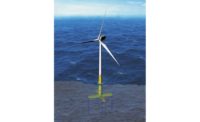Following the Fukushima Daiichi nuclear reactor crisis in Japan, the U.S. nuclear industry is more closely scrutinizing existing facilities, and long-standing problems are placing some plants under the microscope .


“U.S. nuclear facilities are under constant inspection regimens, but since the earthquake we are going at it even stronger,” says Mitch Singer, spokesman for the Nuclear Energy Institute, a Washington, D.C.-based industry organization.
In one example, Progress Energy's Crystal River plant in Florida—offline since September 2009 for a refueling and maintenance outage—could be permanently closed.
While installing new steam generators to replace old ones in the containment building last March, Progress discovered a separation in the 42-inch wall and another during repair of that problem. Progress spent $150 million on the repair of the first separation and $290 million on replacement power costs, says Tim Leljedal, Progress Energy spokesman.
The utility is analyzing its options, including repair or decommissioning. “We have a strong preference to repair the facility and return it to service,” Leljedal says. There is no deadline for deciding on the plant's future, but he says Progress will give the Florida Public Service Commission an update on June 27.
At NextEra Energy Resources' Seabrook nuclear powerplant in Seabrook, N.H., officials are concerned about a concrete electrical tunnel weakened by groundwater beneath the facility. The problem arises as Seabrook's license renewal application is pending.
At issue is the probable link between an alkali-silica reaction (ASR) in the tunnel's concrete and loss of more than 20% of its strength, which officials from the Nuclear Regulatory Commission say is the first such occurrence it has identified in the U.S. While the ASR problem has not been detected at other sites, NRC says it could be occurring elsewhere.
The NRC has reached out to the Dept. of Transportation for expert advice since it is unclear how ASR will affect the tunnel over time.
Arthur Burritt, NRC's branch chief for inspections at the Seabrook nuclear facility, says despite possible groundwater intrusion, the reactor has not been affected and that structures are still sound.
NextEra determined that the tunnel remained operable with a 50% reduction in design margin. A May 13 NRC inspection report notes that the performance deficiency related to ASR is significant because if left uncorrected it could result in a reactor trip. Core samples of reactive concrete taken in 2010 are currently undergoing analysis, with initial findings expected soon.



Post a comment to this article
Report Abusive Comment